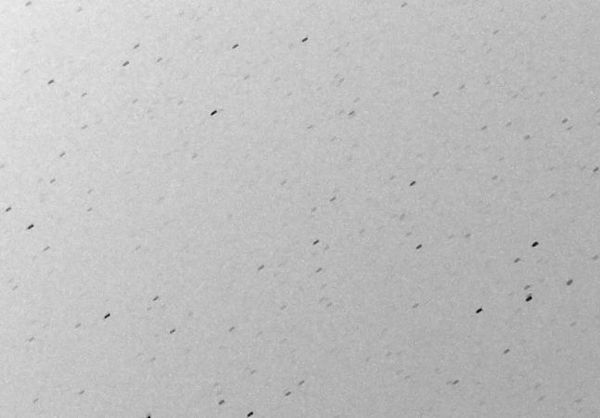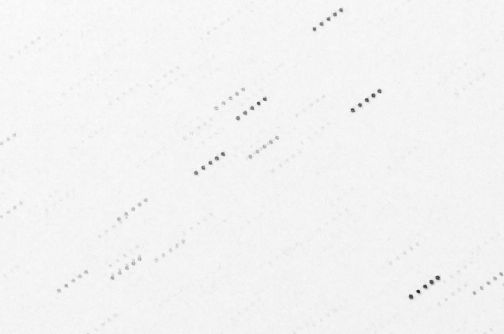A point that's often overlooked when discussing how to shoot a full moon
Nov 17, 2018 07:43:26 #
Thank you, Larry!
larryepage wrote:
Don't know if there is any energy left around this topic or not, but just thought I'd remind us that this month's full moon will occur one week from tonight. Not sure what the skies will be doing where you live, but it could be a chance for us all to try some of what we have learned through this discussion.
Nov 23, 2018 21:04:38 #
larryepage
Loc: North Texas area
larryepage wrote:
Don't know if there is any energy left around this topic or not, but just thought I'd remind us that this month's full moon will occur one week from tonight. Not sure what the skies will be doing where you live, but it could be a chance for us all to try some of what we have learned through this discussion.
If there are any besides Linda and me that are still interested in this topic, I'd like to remind us that today is the full moon. I have taken images a couple of nights earlier this week, and am working on gettingsome additional ones tonight, although the "seeing" isn't great where I am. Images and exposures should still be ok for discussing exposure.
I am visiting relatives and will continueto be limited to shooting hand held, so it would be great if some others could work on a tripod with slower shutter speeds. It will probably be Sunday or Monday before I can post my results.
More later.
Nov 23, 2018 21:06:30 #
larryepage wrote:
Appreciate the update, Larry. Rain, fog and clouds here since Wednesday...If there are any besides Linda and me that are sti... (show quote)
Nov 24, 2018 08:51:00 #
BooIsMyCat
Loc: Somewhere
abc1234 wrote:
Select a focal length that allows you to fill up the frame.
Not trying to be rude here but, have you ever taken photos of the moon?
What focal length would you use that would allow you to fill the frame when shooting the moon? 1600 -2000mm maybe?
I use a 400mm prime along with a 2.x extender and I can't fill the frame with that unless I use Live View and digital zoom 5x - 10x and that's only for focusing.
May 5, 2020 13:07:57 #
After shooting several times on the outskirts of Los Angeles, I have concluded that both light pollution and air pollution can be factors and often are factors when trying to shoot a sharp moon. It gets better the further I get from the city. No surprise. I get much better results when shooting the moon in the Sierra.
May 5, 2020 13:53:57 #
Linda From Yakima wrote:
...2. Shutter speed is relevant because the moon is moving and you or your camera may be also...
I see this is an old thread but I don't see that I have weighed in yet.
Just thought I'd give an example of how much importance you should attach to shutter speed. Attached are a couple of star shots taken on a tripod without a star tracker. The motion of the stars can be seen. The first one is a 10 second exposure which clearly shows the elongation of the stars due to the motion of the earth, to which the camera is attached fairly firmly. The second shot is a series of 2 second exposures at 15 second intervals. These shots are taken at ISO 1600 and reversed to show a negative image because I believe it's easier to see a dark spot on a light background than a light spot on a dark background. Also, when I grew up (to the extent that I have grown up), astrophotography was only done with negatives. That may influence my belief. Of course a negative presentation is probably not appropriate to a moon shot since we're used to looking at a positive image.
The field of view I estimate to be around 1/3 to 1/2 of the diameter of the moon, so a 10 second exposure would probably show smearing of details on the moon. As noted by many, exposures of 2 to 10 seconds are probably very long when it comes to moon shots because the moon is so bright.
A star tracker might be useful if you really needed long exposures, but the moon and the stars move across the sky at different rates. (Or more precisely the moon moves across the sky adding to the relative rate that the earth moves under the sky). (And to be pedantic, some of the stars have observable proper motions but they are only observable over periods of months or years).
10 second exposure, 70mm focal length cropped

(Download)
series of 2 second exposures at 15 second intervals

May 5, 2020 16:52:08 #
Linda From Maine wrote:
With a large variety of suggested settings, seemin... (show quote)
There is also no discussion about when the best phase is to shoot the moon. A less than full moon has more contrast because of the angle of the sun relative to the earth. A full moon is pretty flat in contrast.
May 5, 2020 17:00:44 #
Gene51 wrote:
There is also no discussion about when the best phase is to shoot the moon. A less than full moon has more contrast because of the angle of the sun relative to the earth. A full moon is pretty flat in contrast.
Also, a moon that is not lit straight on (full moon) will show shadows of the craters, leading to more detail on the surface.
May 5, 2020 20:11:27 #
Atmospheric conditions play a bigger part in getting a excellent moon image as opposed to a satisfactory moon image. That's one reason astronomers look all over the world for the best sites to build their observatories. It's called "seeing" which is different than transparency. I'm sure most of you know this. If you look through a telescope at high power at the moon, you'll find out why it's very hard to get an excellent image with only one exposure. You might get lucky, but its rare.
If you want to reply, then register here. Registration is free and your account is created instantly, so you can post right away.


 Many thanks!
Many thanks!